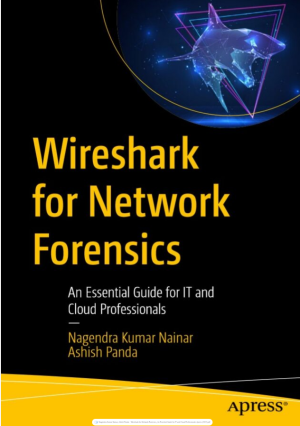Description
Price: 10.00 USD | Size: 12.2 GB | Duration : 6.12 Hours | 56 Video Lessons
BRAND: Expert TRAINING | ENGLISH | INSTANT DOWNLOAD | 



 4.9
4.9
Introduction to Digital Forensics Online Training
This entry-level Digital Forensics training prepares junior security admins to plan for a career in digital forensics, choose the right tools, and uncover the truth behind digital events.
Digital forensics is all the tools, skills, and knowledge that go into analyzing devices and digital information in order to figure out what happened, where traffic went, who used a device, or what crimes were committed. Digital forensics can relate to jobs in criminal investigation and law but also IT jobs in enterprise networks.
There are digital forensics tools that sift through tons of data automatically as well as coding languages and tricks of the trade that make it possible to navigate all that information yourself. Digital forensics is a huge field with a lot of possibilities, and this course introduces you to the concepts, basic skills, and technologies that can turn it into a career for you.
After completing this Digital Forensics training, you’ll know how to plan for a career in digital forensics, choose the right tools, and uncover the truth behind digital events.
For anyone who manages their digital forensics training, this Cyber Security training can be used to onboard new junior security admins, curated into individual or team training plans, or as a Cyber Security reference resource.
Introduction to Digital Forensics: What You Need to Know
This Digital Forensics training has videos that cover digital forensics topics including:
- Legal restrictions and requirements around obtaining digital evidence
- Keeping retrieved digital evidence pristine
- Analyzing, interpreting, and explaining the results of digital investigations
- Choosing between commercially available tools and custom code
Who Should Take Digital Forensics Training?
This Digital Forensics training is considered foundational-level Cyber Security training, which means it was designed for junior security admins. This digital forensics skills course is valuable for new IT professionals with at least a year of experience with digital forensics and experienced junior security admins looking to validate their Cyber Security skills.
New or aspiring junior security admins. Brand new security administrators will learn many technical skills throughout their career, but this course in digital forensics helps explain what those skills are pointing at. In other words, if you want to piece together investigations, not just supply information to someone doing investigations, you should take this course.
Experienced junior security admins. Security administrators with several years of experience will eventually have to choose either to specialize in a technical career or take a more investigatory route with their career. This course helps you specialize your career in digital forensics investigations while you uncover hidden secrets about networks.
Introduction to Digital Forensics FAQs:
What exactly is digital forensics?
Digital forensics is the process of investigating digital devices and the data that’s on them to find evidence that can be used for legal purposes. Digital forensics (sometimes also called computer forensics) involves gathering, preserving, analyzing and presenting digital information in a way that maintains its integrity so that it can be used in court or other legal proceedings. Digital forensics can eventually include many tools, services, and advanced techniques.
What does someone do in computer forensics?
Someone involved in computer forensics is trained in performing systematic collection, preservation, analysis and presentation of digital evidence related to crimes or wrongdoing. Digital forensics professionals aren’t necessarily employed by law enforcement, organizations with large networks and sensitive data employ them to facilitate their own investigations and keep their own networks safe. Job roles and responsibilities vary greatly, but digital forensics includes everything from physically obtaining devices to documenting attacks.
Who should take this introductory course on digital forensics?
The skills and knowledge in this introductory digital forensics course can help professionals in many different fields. New and aspiring law enforcement officers, especially those involved with digital crimes, should consider a course like this to learn the basic skills of the trade. IT professionals, lawyers, auditors and corporate investigators can also benefit from the material on this course. Investigating cybercrimes and ensuring data security apply to many different careers.
Is computer forensics hard?
Computer forensics can be a challenging and technically complex field thanks to constantly evolving technology, diversity of digital devices, and increasingly sophisticated attacks. As this course helps reveal, there are tools and techniques for analyzing large amounts of data while maintaining its integrity, but it still requires specialized skills, knowledge and experience. Digital forensics is a challenging field, but there is a clear roadmap paved with excellent learning opportunities.
What are the basics of digital forensics?
Digital forensics is fundamentally centered on two things: the preservation of evidence and the reconstruction of events. Law enforcement officials and corporate interests tend to be interested in the preservation of evidence: with sufficient evidence, wrongdoers can be held accountable – and the chain of evidence must be maintained. On the other hand, cybersecurity professionals emphasize understanding how attacks are carried out, revealing weaknesses in networks and devices to prevent future attacks.
Incident Response
1. Overview
2. Incident response
3. Incident Handling Process
4. Preparing for the Incident
5. Event Detection
6. Eradicate and Recover
7. Interfacing With Law Enforcement
8. Conclusion
Digital Investigations
1. Overview
2. Digital Investigations
3. Identify Digital Evidence
4. Understanding the Disc
5. Basics of Coding
6. Network Devices
7. Operating Systems
8. Reading Materials
9. Conclusion
Live Examination
1. Overview
2. Live Examination
3. Approaching the System
4. Cloning a System
5. Moving to the Next Step
6. Conclusion
Network Investigations
1. Overview
2. Supplemental File
3. Network Investigations
4. Session Monitoring
5. Too Many Connections
6. Knowing the Boundaries
7. Packet Reading Basics
8. Network Analysis WITH SSL/TLS
9. Conclusion
Memory Investigations
1. Overview
2. Supplemental File
3. Memory Investigations
4. How RAM Operates
5. Extracting the Memory
6. Comparing to the System
7. Conclusion
Malware Investigations
1. Overview
2. Malware Investigations
3. Know the Enemy
4. Malware Alert!
5. Finding the Malware
6. The Hunt Begins
7. Find the Evidence on the Network
8. Report the Findings
9. Conclusion
Cloud Investigations
1. Overview
2. Cloud Investigations
3. Identifying the Different Clouds
4. Specializing Those Clouds
5. Understand the flow
6. Tool Usage
7. Conclusion
Federal Rules of Evidence
1. Overview
2. Federal Rules of Evidence
3. Daubert Standard
4. Rule 702
5. Rule 701
6. Rule 901
7. Rule 902
8. Tying it all together
9. Conclusion
Discover more from Expert Training
Subscribe to get the latest posts sent to your email.























